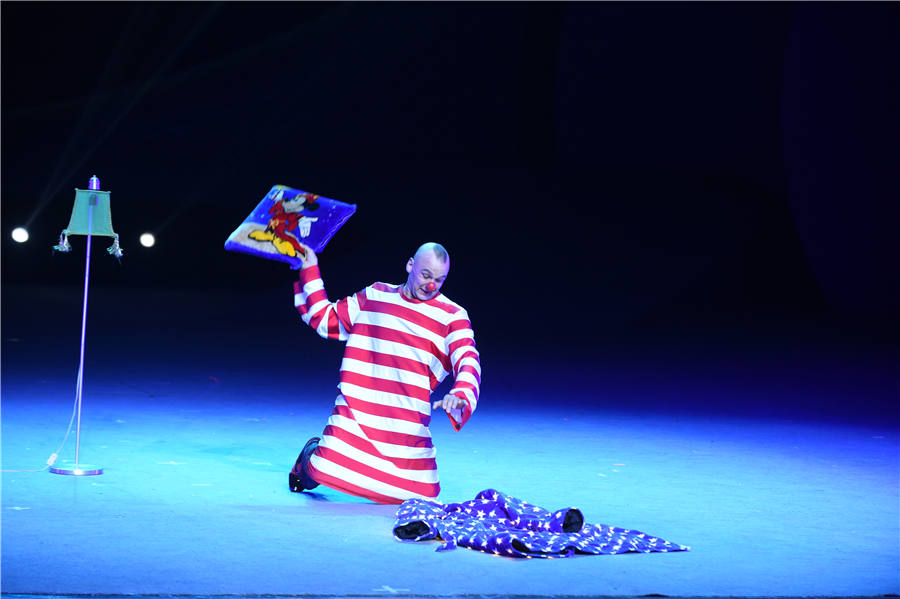
The closing and awards ceremony of the 15th China Wuqiao International Circus Festival (CWICF) was held at Cangzhou Gymnasium in Cangzhou, Hebei province on the evening of October 7.
There were 30 programs from over 20 countries at this year's event, making it a big carnival for world acrobats.
Chinese artists incorporated traditional culture into their performances which was considered the highlights of the festival. In Balancing on Ladder by Hebei Acrobatic Troupe, long sleeve Chinese opera was adopted into difficult acrobatics. Other programs like Monocycle, Head Balancing and Foot Juggling with Drums have combined traditional arts with acrobatic art.
The 15th CWICF, which lasted eight days, was organized by China's Ministry of Culture and Hebei Provincial Government.
"The world is looking forward to seeing acrobatic shows with Chinese characteristics, and as far as I'm concerned, Chinese style is one of the most distinctive styles of performance." said Peter Dubinsky, president of Firebird Productions of USA.
Dubinsky has been engaged in studying circus for 30 years and served as a jury for CWICF since 1999.
"We are coming here to get entertained by more funny and different shows and that's why more and more foreigners are willing to visit CWICF", Dubinsky said.
Wuqiao county, seated at the junction of southeast of Hebei province and Shandong province, is regarded as the hometown of Chinese circus. Many say everyone from Wuqiao can do acrobatics regardless of his or her age.
Wuqiao acrobatics undergoes a long period of progress and development. According to Wuqiao county annuals, the origin of Wuqiao acrobatics dates as far back as the Ming Dynasty and had close relations to the prosperity of the Grand Canal. During the Ming (1368-1644) and Qing (1644-1911) dynasties, the area along the Grand Canal was economically developed with the flourishing of canal transportation. The booming docks and towns provided a stage for acrobats. Wuqiao acrobats went to more densely populated and prosperous cities such as Beijing, Tianjin, Jinan and Nanjing via the canal.
Due to singular skills and constant changes of trends, it was hard to succeed in this career. They often suffered after stepping down from acrobats. This negative phenomenon had made it difficult to recruit students.
Today, all acrobatic troupes are trying to get rid of this nightmare by artistic innovation. They found that the integration of more stage arts facilitates acrobatic development.





